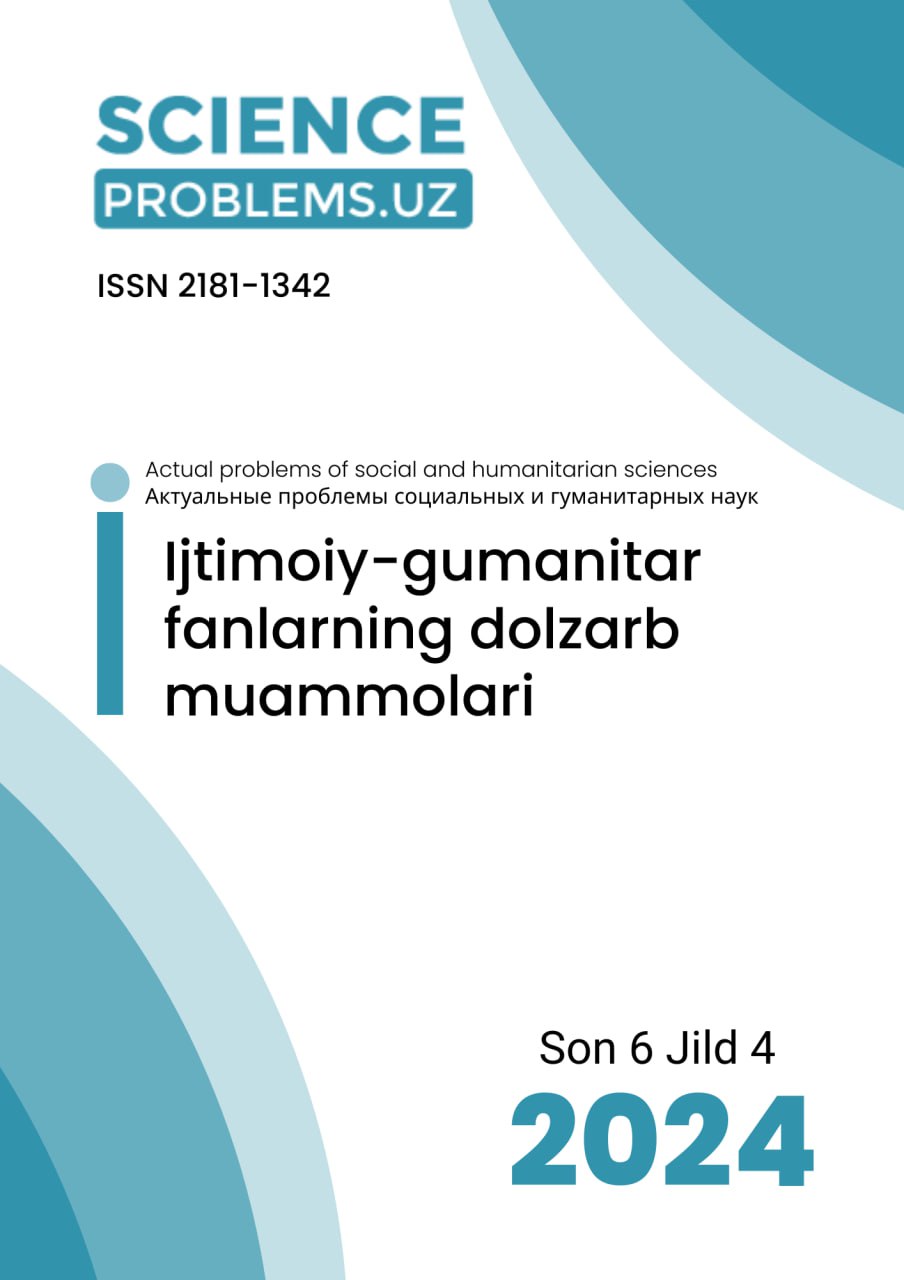NOFILOLOGIK TA’LIM YO’NALISHI TALABALARI O’QISH KOMPETENSIYASINI RIVOJLANTIRISHDA SOHAVIY MATNLAR XUSUSIYATLARI VA MATN TANLASH TAMOYILLARI
DOI:
https://doi.org/10.47390/SPR1342V4I6Y2024N104Ключевые слова:
nofilologik yo’nalish talabalari, sohaviy matnlar, o’qish kompetensiyasi, matn tanlash tamoyillari, ilmiy yondashuvlar.Аннотация
Ushbu ilmiy maqola nofilologik ta’lim yo’nalishlari talabalarida o’qish kompetensiyasini rivojlantirishning asosiy sohaviy matnlar xususiyatlari va matn tanlash tamoyillari xususida muallif tomonidan keltirilgan qarashlar va yondashuvlarni ilmiy asoslashga bag’ishlangan. Hamda sohaviy matn orqali til o’rgatishda real hayotiy vaziyatning muqobil ko’rinishi sifatida yordam berishi, sohaviy matnlarning ommalashuvi talabalarga interaktiv til muhitini yarata olishi olimlar tomonidan ta’kidlab o’tilganligi ochib berilgan. Bunday tizimli metod ya’ni boshqa turdagi sohaviy materiallarga asoslangan o’qitish metodikasi ustida olimlarning yetarlicha izlanishlari chet tillarda o’qitishda maqsadli qo’llash usullari haqida qator matnlar misol qilib keltirilgan. Kommunikativlikka asoslangan chet tilini o’qitish metodikasi zamonaviy til o’rgatish talablariga ko’ra, talabalarni faqat muloqotga o’rgatishning o’zini qoniqarli natija, deb hisoblamaydi, balki qo’shimcha tarzda chet tilini o’qitish vositalari yordamida talabani o’rganilayotgan til madaniyatidan xabardor qilish barobarida, kommunikativlikning barcha mezonlariga amal qilgan holda muloqotga kirisha olishini ta’minlashni talab etilishi maqolada batafsil yoritilgan.
Библиографические ссылки
Janice Herrington, Anthony Herrington (2011). Learning with Technology: An Integrated Approach.
S.Krashen, (1989).We acquire vocabulary and spelling by reading: Additional evidence for the input hypothesis. Modern Language Journal 73, 440-464.
Brinton, D., Snow, M., & Wesche, M. (2003). The content-based second language instruction (2nd Ed.). Ann Arbor: The University of Michigan Press.
Jamol Jalolov. Chet til o’qitish metodikasi. Chet tillar oliy o’quv yurtlari (fakultetlari) talabalari uchun darslik. O’zbekiston Respublikasi Xalq taʼlimi Vazirligi tasdiqlagan “O’qituvchi“Nashriyot-matbaa ijodiy uyi. Toshkent – 2012.
Pol Nation (1998). A bibliography of language learner literature in English. (169-218).
Пассов E.И.Теория методики. Иноязычное образование. Чернышов С.В., Шамов А.Н. Теория и методика обучения иностранным языкам. М.:КНОРУС, 2022.
Harmer Jeremy. Engaging Students as Learners. English Teaching Professionals, 2006.
Nunan (1999). The Cambridge guide to teaching English to speakers of other languages. – Cambridge University Press, 2001.
Jalolov J.J. Chеt til o’qitish mеtodikasi: Chеt tillar oliy o’quv yurtlari talabalari uchun darslik. – O’qituvchi, Т.2012-413.
S.K.Folomkina, (2005). Обучение чтению на иностранном языке в неязыковом вузе: учебно-методическое пособие. М.: Высшая школа. 2005.
R.R.Day, and Bamford, J. (1998). Extensive reading in the second language classroom. Cambridge: Cambridge University Press.
D.Nunan The Cambridge guide to teaching English to speakers of other languades. – Cambridge University Press, 2001.








